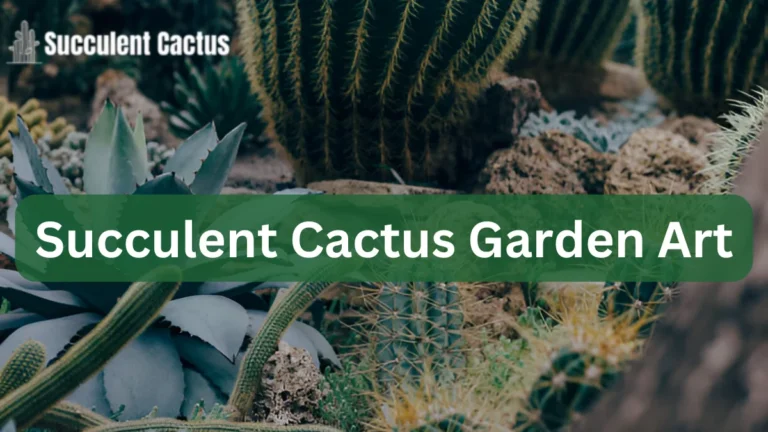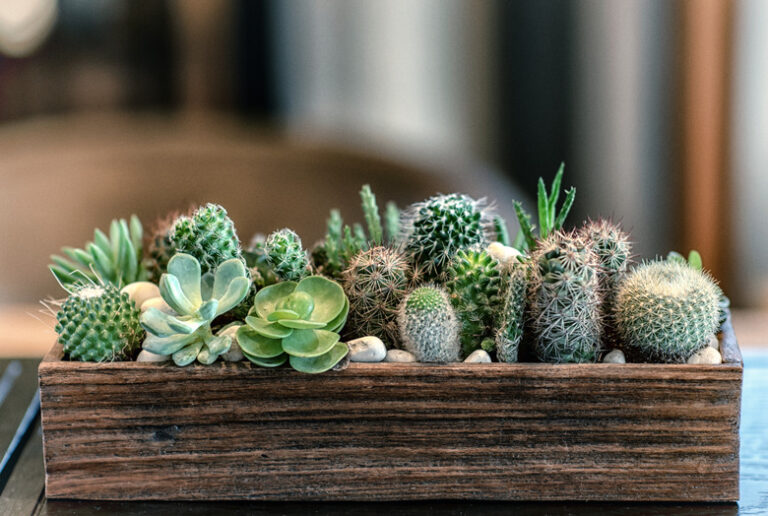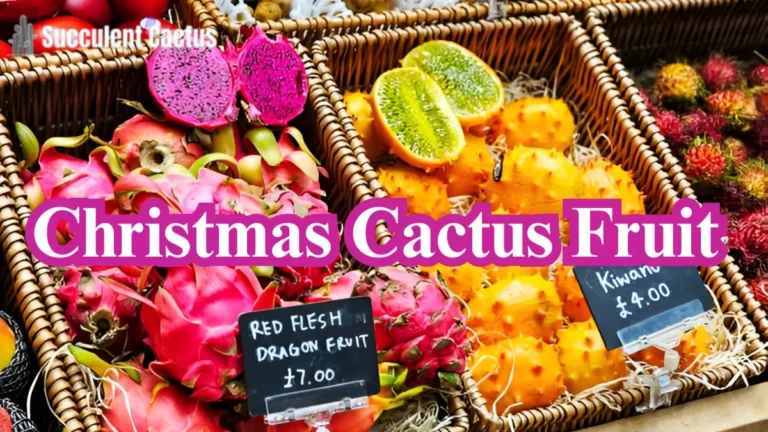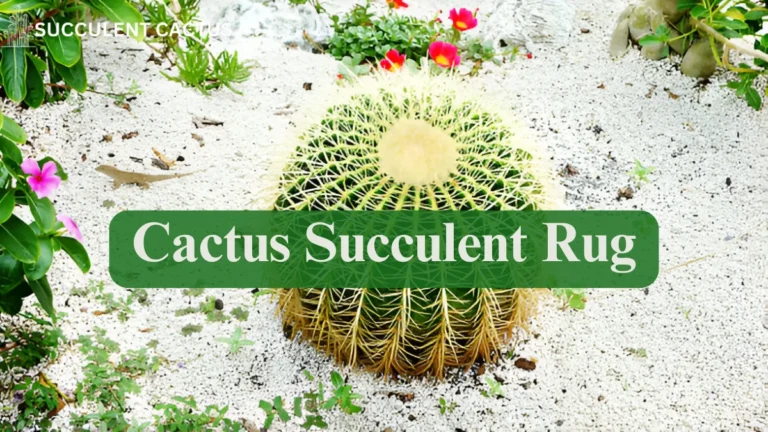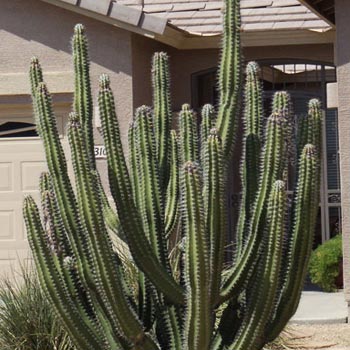Is Agave a Cactus or Succulent?

Agave plants are often confused with cacti due to their appearance, which is characterized by spiky leaves and a rugged, desert-like aesthetic. However, despite the similarities, agave belongs to the succulent family, not the cactus family. In this comprehensive blog post, we’ll delve into the differences, uses, and characteristics of agave, helping you better understand what makes it unique. We will explore various aspects of agave, including its types, care, medicinal properties, and its role in the environment.
Understanding Agave: A Succulent, Not a Cactus
Agave is commonly found in arid environments, thriving in dry, hot conditions. Despite its cactus-like appearance, it is actually classified as a succulent, a plant type known for its water-storing capabilities. In this section, we’ll explore the key differences between agave and cactus, and why it is important to distinguish between the two.
Key Differences Between Agave and Cactus
While agave and cactus plants share some features, they belong to different plant families. Agave is part of the Asparagaceae family, while cacti belong to the Cactaceae family. Understanding these families can help differentiate the two.
- Agave Features: Agave plants have thick, fleshy leaves that store water, and they often form rosettes. They can be found in regions like Mexico, Central America, and the southwestern United States.
- Cactus Features: Cacti are known for their ability to survive in extremely dry conditions. They often have spines instead of leaves, and many species possess unique adaptations, like the ability to store water in their stem.
Agave vs. Cactus in Their Natural Habitats
Agave thrives in dry, rocky soil, whereas cacti are typically found in even harsher, drier environments like deserts and arid plains. Let’s examine how these plants have adapted to survive in such unforgiving climates.
- Agave’s Habitat: Agave plants are native to hot, semi-arid regions where water conservation is crucial. They can tolerate periods of drought and are adapted to survive through their thick leaves, which store moisture.
- Cactus’ Habitat: Cacti, on the other hand, often have deeper root systems and more pronounced water-storage mechanisms, allowing them to endure even more extreme desert conditions.
Why the Confusion?
The confusion between agave and cactus often arises because both types of plants are designed to withstand arid environments. However, their internal structures and classification set them apart. Both agave and cacti feature sharp, pointed leaves, but their biological makeup is different, which is the primary reason agave is a succulent rather than a cactus.
The Unique Characteristics of Agave
Agave plants are known for their resilience and unique physical characteristics. Their leaves, rosette shapes, and ability to thrive in dry conditions make them stand out among succulents. Let’s take a closer look at the physical traits that define agave.
The Rosette Shape of Agave Leaves
Agave plants often have a rosette shape, meaning their leaves grow in a circular, spiraled pattern. This shape helps conserve moisture and minimizes the amount of direct sunlight that the plant’s inner leaves receive.
- Water Conservation: The rosette shape helps protect the plant’s water reserves, allowing it to survive long dry spells.
- Leaf Structure: The leaves of agave are thick and fleshy, with a waxy coating that helps prevent water loss.
Agave’s Long Lifespan and Flowering Process
Agave plants are slow-growing and can live for many years, sometimes decades, before they bloom. Their flowering process is unique in that they tend to bloom only once in their lifetime.
- Lifespan: Many agave plants live between 10 to 30 years before flowering, depending on the species.
- Flowering: When an agave does flower, it produces tall, dramatic flower stalks that can reach several feet in height.
Agave Spines and Sharp Edges
Agave plants defend themselves with their spiky, sharp-edged leaves, which serve as a mechanism against herbivores. The leaves have a spine at the tip and along the edges to ward off potential threats.
- Protective Spines: Agave spines are not just sharp but can be quite sturdy and effective in deterring animals from consuming the plant.
- Leaf Characteristics: The leaves are often fleshy and stiff, with a waxy coating that aids in water retention.
Types of Agave Plants
People prize some species for their ornamental value, while others cultivate them for practical uses, such as in the production of tequila.
Agave Americana (Century Plant)
The Agave americana, also known as the century plant, is one of the largest and most well-known species of agave. It is native to Mexico and can grow up to 6 feet tall, with leaves that are up to 5 feet long.
- Size and Shape: The Agave americana has long, broad leaves and forms a rosette shape.
- Use: People often use this species in landscaping and value it for its striking appearance.
Agave Tequilana (Blue Agave)
Agave tequilana is the species of agave used to make tequila. It is typically blue in color, with leaves that are thick, fleshy, and sharp.
- Tequila Production: The blue agave’s sap, known as “aguamiel,” is fermented to produce tequila.
- Agricultural Importance: Agave tequilana plays a crucial role in the economy of Mexico, where it is farmed for tequila production.
Agave Parryi
Agave parryi, also known as Parry’s agave, is a smaller species that is popular in landscaping due to its compact size and striking blue-gray leaves.
- Compact Growth: Unlike larger species, Agave parryi grows in a compact rosette and can be used in smaller garden spaces.
- Aesthetic Value: This species is particularly valued for its dramatic appearance, with thick, spiny leaves that create an eye-catching visual effect.
Agave’s Role in the Environment
Agave plants play an important role in their native environments, particularly in desert and semi-desert ecosystems. Their water-storing abilities and drought tolerance help them thrive in harsh conditions, providing food and shelter for a variety of species.
Agave’s Water Conservation Mechanism
As a succulent, agave has developed specialized mechanisms to conserve water. These adaptations are essential for survival in environments where water is scarce.
- Water Storage: Agave plants store water in their thick leaves, which helps them survive through periods of drought.
- Stomatal Control: Agave plants open their stomata (pores) only at night to minimize water loss, which is a key feature of many succulents.
Providing Shelter and Food for Wildlife
Agave plants are important sources of food and shelter for various desert animals, including insects, birds, and small mammals.
- Nectar: The flowers of some agave species produce nectar, which attracts pollinators like bees and hummingbirds.
- Shelter: The leaves of larger agave plants can provide shelter for small desert creatures seeking shade from the harsh sun.
Agave and Soil Erosion Control
These are often used in erosion control projects due to their ability to survive in dry, rocky soils and prevent soil degradation.
- Root System: Agave’s strong root system helps anchor soil in place, making it an effective plant for stabilizing landscapes.
- Reforestation Projects: Agave is also used in reforestation and land reclamation efforts, particularly in areas affected by desertification.
Agave in Traditional Uses and Medicine
It has a long history of use in traditional medicine and other applications, particularly in Native American and Mexican cultures. It has been used for various purposes, from medicinal treatments to food and beverage production.
Medicinal Properties of Agave
Agave plants have been used for centuries for their healing properties. The sap of agave is often used as a remedy for a range of ailments.
- Wound Healing: People use agave sap as a topical treatment for wounds and burns due to its antibacterial properties.
- Digestive Aid: People use agave to treat digestive issues, such as constipation, by promoting healthy bowel movements.
Agave in Food and Drink
The sap of certain agave species is used to make sweeteners like agave syrup, which is popular in the food industry as a natural alternative to sugar.
- Agave Syrup: People produce agave syrup by extracting the sap and then filtering and heating it to create a sweetener.
- Tequila and Mezcal: People use some species of agave to produce alcoholic beverages like tequila and mezcal, which are central to Mexican culture.
Agave for Fiber Production
In addition to its medicinal uses, people use agave fibers for various practical applications, including making ropes, mats, and textiles.
- Agave Fiber: People can spin the long, tough fibers of certain agave species into threads and weave them into fabrics.
- Traditional Uses: Indigenous cultures have used agave fibers for centuries to create practical items like baskets and clothing.
Agave’s Economic Importance
Agave is economically significant due to its use in various industries, particularly in the production of tequila, sweeteners, and fibers. The agave industry has a substantial economic impact, especially in Mexico.
The Tequila Industry
Agave tequilana is the primary species
used to produce tequila, a globally popular alcoholic beverage. The tequila industry contributes significantly to Mexico’s economy, with millions of liters of tequila produced each year.
- Tequila Production: The production of tequila involves harvesting the blue agave plant, extracting its sap, and fermenting it to produce the alcohol.
- Global Demand: Tequila is a popular drink worldwide, and its production supports thousands of jobs in agriculture, distillation, and tourism.
Agave-Based Products
People use agave to create a variety of products, including sweeteners and fibers, which are sold globally.
- Agave Syrup: The increasing demand for natural sweeteners has led to the rise of agave syrup as a popular alternative to sugar.
- Agave Fiber Products: Manufacturers use agave fibers to create eco-friendly products, such as ropes, textiles, and biodegradable materials.
Job Creation and Rural Development
The agave industry provides employment opportunities in rural areas, especially in Mexico, where agave farming is an important part of the economy.
- Agave Farmers: Thousands of farmers rely on agave cultivation as a source of income, particularly in regions where other crops may not thrive.
- Tourism: The tequila industry has also led to the growth of agave-related tourism, with many visitors touring agave fields and distilleries.
The Importance of Agave in Landscaping
Agave plants are frequently used in landscaping, particularly in xeriscaping, a method of landscaping that emphasizes water conservation. Their hardiness, unique shapes, and low-maintenance nature make them ideal for creating striking outdoor spaces in dry climates.
Agave’s Aesthetic Appeal in Gardens
Agave plants add dramatic, architectural beauty to gardens, especially in xeriscaped or desert-themed landscapes. Their spiky leaves and rosette growth habit create focal points in gardens, making them a favorite among gardeners seeking low-maintenance, visually stunning plants.
- Design Elements: Agave plants can be arranged as feature plants in gardens, either in clusters or as stand-alone specimens. They work well in modern, minimalist garden designs, where the focus is on clean lines and bold, structural elements.
- Color and Texture: Agave varieties come in a range of colors, from deep greens to striking blues and silvers, making them versatile for creating dynamic visual contrasts in the landscape.
Agave as a Drought-Resistant Plant
One of the key reasons agave is popular in landscaping is its ability to withstand drought. With increasing concerns over water conservation, agave provides an environmentally friendly option for gardeners looking to minimize water usage while maintaining an attractive garden.
- Low Water Requirements: Agave is highly drought-tolerant, requiring minimal water once established. This makes it a sustainable choice for gardeners in arid regions.
- Soil Adaptability: Agave thrives in well-draining soils and does not require frequent watering, which is essential for water-scarce environments.
Agave in Container Gardening
People find agave plants well-suited for container gardening, making them a versatile option for urban gardening or those with limited space. Their compact size and drought tolerance make them perfect for creating small garden displays on patios, balconies, or terraces.
- Container Tips: When growing agave in containers, ensure that the pots have good drainage to prevent waterlogging, as agave roots do not like to sit in water.
- Stylish Arrangements: You can place agave plants in decorative pots to add visual interest and provide an easy-care solution for small spaces.
Agave and the Future of Sustainable Farming
As the world turns its focus toward more sustainable agricultural practices, researchers are exploring agave plants for their potential in alternative farming methods. Agave’s low water requirements, ability to grow in arid conditions, and multi-purpose uses make it a promising crop for the future.
Agave as a Water-Efficient Crop
Agave’s remarkable ability to conserve water and grow in drought-prone areas makes it a potential crop for regions facing water scarcity. This is particularly important in the face of climate change and growing concerns about freshwater shortages.
- Water Conservation: Agave is highly efficient in its use of water, allowing it to thrive in regions where traditional crops may struggle.
- Climate Adaptation: Agave’s resilience to heat and drought makes it a suitable crop for future farming in desert and semi-desert environments.
Agave as a Biofuel Source
Agave is being studied for its potential as a biofuel source. People can ferment the sugars found in agave to produce ethanol, which can be used as a renewable energy source.
- Biofuel Production: Agave’s high sugar content, especially in species like Agave tequilana, makes it an ideal candidate for biofuel production.
- Sustainable Energy: Using agave as a biofuel source could reduce dependence on fossil fuels, contributing to more sustainable energy practices.
Regenerative Agriculture with Agave
Regenerative agriculture focuses on restoring the health of the soil and ecosystems, and agave plays a key role in this approach. Its deep root system helps prevent soil erosion and can improve soil quality over time.
- Soil Health: Agave’s roots help bind the soil, preventing erosion and promoting soil regeneration.
- Agave in Agroforestry: Researchers are exploring agave for use in agroforestry systems, where people can grow it alongside other crops to improve soil health and biodiversity.
Common Pests and Diseases Affecting Agave
Although agave is a hardy plant, pests and diseases can still affect it, especially if people don’t meet its care requirements. Understanding the common pests and diseases that affect agave is essential for ensuring that these plants remain healthy and vibrant.
Common Pests that Affect Agave
Agave plants attract several pests, including insects and other critters, because of their succulent leaves. Keeping an eye on your plant and addressing infestations early can prevent significant damage.
- Agave Weevil: One of the most destructive pests for agave, the agave weevil burrows into the plant’s core, causing it to rot from the inside out.
- Mealybugs: These small, cotton-like insects feed on the sap of agave plants, weakening the plant and causing discoloration.
- Aphids: Aphids can infest agave plants, feeding on the sap and leaving behind a sticky residue known as honeydew.
Diseases That Affect Agave
In addition to pests, agave can also suffer from diseases that affect its overall health. Recognizing symptoms of common agave diseases can help prevent long-term damage to the plant.
- Fungal Rot: Fungal infections can occur in agave plants if they are exposed to too much moisture, leading to rot and decay.
- Bacterial Wilt: This bacterial infection can cause the leaves of agave plants to yellow and wilt, eventually leading to the death of the plant.
- Root Rot: Overwatering or poor drainage can lead to root rot, which causes the plant’s roots to become mushy and discolored.
Preventing and Treating Agave Pests and Diseases
Taking a proactive approach to pest control and disease prevention is key to maintaining a healthy agave plant. Some preventive measures include:
- Proper Watering: Ensure that the agave is planted in well-draining soil and avoid overwatering.
- Insecticidal Soap: For insect infestations, using insecticidal soap can help treat mealybugs, aphids, and other pests.
- Removing Damaged Leaves: Regularly inspect the plant and remove any damaged or infected leaves to prevent the spread of disease.
Agave in Cultural Significance and Tradition
Agave has deep cultural significance, particularly in Mexico and other parts of Central America. The plant is intertwined with the history, rituals, and traditions of indigenous peoples, and it continues to play an important role in modern culture.
Agave in Mexican Culture
In Mexican culture, agave holds a sacred status, particularly the blue agave used to produce tequila. For centuries, agave has been used in various aspects of life, from food and medicine to religious ceremonies.
- Tequila Rituals: Mexicans have long tied tequila production and consumption to their identity and celebrations. They often see agave as a symbol of national pride and cultural heritage.
- Traditional Uses: Indigenous communities still use agave leaves and fibers to create essential items like baskets, mats, and clothing.
Agave in Native American Culture
Native American cultures have used agave for centuries as a resource for food, medicine, and craft materials. They saw it as a life-sustaining plant that provided both sustenance and healing properties.
- Food Source: Many Native American tribes cooked and ate the hearts or “piñas” of the plant, showcasing its value whether as an Agave Cactus or Succulent in their traditional diets.
- Medicinal Uses: People used agave sap and juices in traditional healing practices to treat various ailments.
Agave as a Symbol of Strength and Resilience
Whether Agave Cactus or Succulent, this plant’s remarkable ability to endure harsh, arid conditions has made it a powerful symbol of strength and resilience, celebrated in cultural rituals, folklore, and artistic depictions.
- Cultural Symbols: Mexican artists, writers, and folklorists often feature agave as a symbol of endurance and perseverance in the face of adversity.
- Spiritual Significance: In some cultures, people consider agave sacred, representing the connection between them and the land they inhabit.
Agave in Modern-Day Uses and Innovations
Agave’s applications go beyond tequila and landscaping. As interest in sustainable practices grows, industries such as fashion, technology, and eco-friendly products are incorporating agave.
Agave in Sustainable Fashion
The fibers from the agave cactus or succulent have gained popularity in the fashion industry, particularly for creating eco-friendly and biodegradable clothing and accessories. These fibers are durable, lightweight, and versatile, making them a great alternative to synthetic materials.
- Agave Leather: Manufacturers use agave fibers to make plant-based leather, offering a more sustainable alternative to animal-derived leather.
- Sustainable Textiles: Producers weave agave fibers into textiles to create sustainable clothing and accessories, helping reduce the environmental impact of fast fashion.
Agave-Based Bioplastics
Researchers are exploring agave as a source of bioplastics, offering a more environmentally friendly alternative to petroleum-based plastics. They process the fibers and sugars found in agave to create biodegradable plastics that naturally break down over time.
- Agave as a Raw Material: Manufacturers can use the cellulose from agave fibers to produce bioplastics, reducing reliance on fossil fuels.
- Reducing Plastic Waste: Agave-based bioplastics offer an eco-friendly solution to the growing problem of plastic pollution.
Agave in Eco-Friendly Packaging
As sustainability becomes a priority, the packaging industry is turning to the agave cactus or succulent to create eco-friendly packaging materials that are biodegradable and compostable.
- Biodegradable Packaging: Manufacturers use agave fibers to make biodegradable containers, wrappers, and other packaging products.
- Sustainable Solutions: Agave-based packaging offers a renewable and compostable alternative to traditional plastic packaging, reducing waste.
FAQs About Agave: Is it a Cactus or a Succulent?
Q:1 Is agave a cactus or a succulent?
Agave is a succulent, not a cactus. It belongs to the Asparagaceae family, whereas cacti are part of the Cactaceae family.
Q:2 Can agave be grown indoors?
Yes, you can grow agave indoors, as long as it gets plenty of sunlight and well-draining soil.
Q:3 What are the health benefits of agave?
Agave has several medicinal benefits, including its use in treating wounds, digestive issues, and as a natural sweetener.
Q:4 How often should I water my agave plant?
Agave plants are drought-tolerant and should be watered sparingly. Water only when the soil is dry to the touch.
Q:5 Is agave used to make tequila?
Yes, people use the blue agave (Agave tequilana) to make tequila, a popular Mexican spirit.
12. Conclusion: The Enduring Legacy of Agave
Agave, often referred to as an agave cactus or succulent, is a resilient and multifunctional plant that continues to play a significant role in cultures, economies, and industries around the world. Whether people use it for tequila production, landscaping, sustainable agriculture, or innovative products, agave demonstrates its value in both ancient and modern contexts. From its deep cultural significance to its practical applications, agave offers a glimpse into how plants can support human life while promoting environmental sustainability. As we face new challenges in agriculture, resource conservation, and sustainable innovation, agave stands as a powerful symbol of adaptability, resilience, and possibility.

